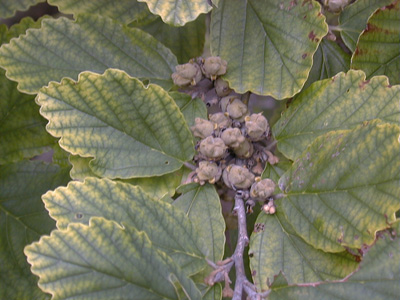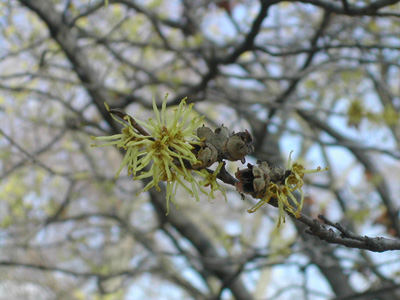Witch Hazel Lore
The common name witch hazel comes from colonial times. The leaves of Hamamelis virginiana resembled the leaves of European hazelnut (Corylus sp.) to the colonists. Both plants grow around woodland streams and witch hazel also has a similar growth habit to hazelnut.

Both plants have seed capsules in the Summer. But there are big differences in size (hazelnuts are much bigger) and methods of distribution. Hazelnuts rely on mammals and birds to disperse their nuts. Witch hazels eject their ripe seeds from the shell with great force in early Autumn. The seeds shoot out with an audible “pop” and land up to 30’ away. The sounds of that popping throughout the woods of eastern North America led the colonist to think of these New World shrubs as bewitched hazels. Common speech shortened it to witch hazel and the name stuck.
Maybe because of their link to the supernatural, witch hazels branches were preferred by settlers and dowsers as diving rods when searching for underground water and minerals.
Native Americans used witch hazel extracts for an astringent and antiseptic. Today that practice continues. Witch hazel astringent is used for after shave, insect bites, stings, bruises, scrapes, and sunburn. Witch hazel pads are great for taking make-up off your face. Your skin feels fresh and clean, but not too dry. I usually buy Thayer, but there are several good brands.
